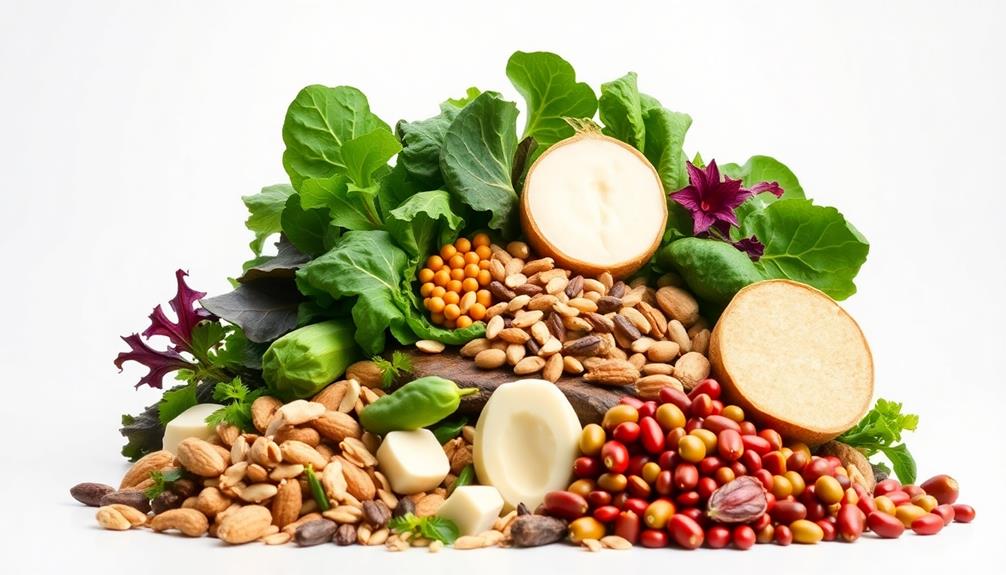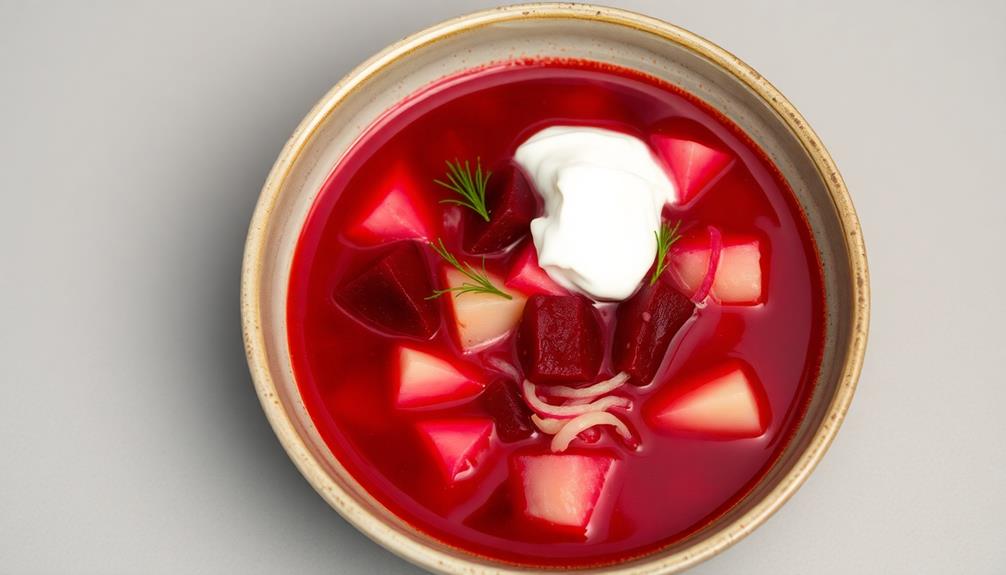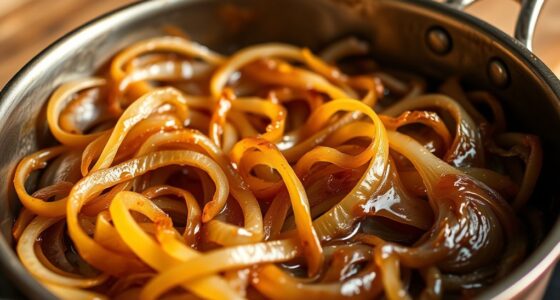Bouillabaisse, the renowned Provençal fisherman's stew, will transport you to the sun-drenched coasts of southern France. This vibrant dish celebrates the region's rich maritime heritage, reflecting generations of culinary artistry. Combining fresh, locally-sourced seafood simmered in a flavorful broth with aromatic herbs and spices, each bite offers a sensory delight. The recipe's authenticity relies on careful ingredient selection, achieving a complex flavor profile through a harmonious balance. Serve bouillabaisse immediately, accompanied by crusty bread to soak up the broth – an invitation to slow down and savor the simple pleasures of life. There's more to discover about this cherished culinary tradition.
Key Takeaways
- Bouillabaisse originated in the coastal regions of southern France, particularly Marseille, and was created by fishermen using unsold catch for a hearty soup.
- Bouillabaisse is a classic Provençal seafood stew that celebrates the rich maritime heritage of the Provence region, combining fresh, locally-sourced fish and shellfish.
- The dish is known for its vibrant colors, depth of flavor, and harmonious balance between flavors and textures, with key ingredients including rouille, mixed seafood, and aromatic herbs and spices.
- Authenticity of bouillabaisse relies on the careful selection and preparation of ingredients, achieving a complex flavor profile through a blend of fish and shellfish.
- Bouillabaisse is often served immediately, accompanied by crusty bread to soak up the flavorful broth, and can be enjoyed in seaside cafés or as a home-cooked celebration of Provençal flavors.
History
Bouillabaisse, the iconic Provençal fisherman's stew, has a rich history rooted in the coastal regions of southern France. This delicious seafood stew recipe has been passed down through generations, with each family adding their own twist to the classic dish. Traditionally made with a variety of fresh fish, shellfish, tomatoes, and flavored with herbs and spices, bouillabaisse is a beloved dish in the region and has gained popularity around the world. The delectable aroma and flavorful taste of bouillabaisse make it a favorite choice for seafood lovers.
This beloved dish was created by humble Marseille fishermen, who'd use the day's unsold catch to make a hearty, flavorful soup. The original bouillabaisse was a simple blend of various Mediterranean fish, simmered together with tomatoes, garlic, saffron, and herbs.
Over time, the recipe evolved as chefs experimented with different seafood combinations and seasonings.
Today, bouillabaisse remains a beloved part of Provençal cuisine, enjoyed by locals and visitors alike. The dish's unique flavors and traditions have even earned it recognition as a cultural treasure, protected by France's National Inventory of Traditional Culinary Heritage.
Whether savored in a seaside café or recreated at home, bouillabaisse continues to captivate and delight those who experience its rich, coastal flavors.
Recipe
Bouillabaisse is a classic Provençal seafood stew that originated from the fishing ports of Marseille. This robust and flavorful dish showcases the bounty of the Mediterranean, featuring a variety of fresh seafood simmered in a saffron-infused broth.
The key to an authentic bouillabaisse lies in the careful selection and preparation of the ingredients. The blend of different types of fish and shellfish creates a complex and harmonious flavor profile that's truly unique to this regional specialty.
- Rouille (a garlicky saffron-colored mayonnaise)
- 1 lb mixed seafood (such as halibut, monkfish, shrimp, mussels, and clams)
- 1 onion, diced
- 3 cloves garlic, minced
- 1 fennel bulb, thinly sliced
- 1 cup dry white wine
- 1 cup fish or seafood stock
- 1 (14.5 oz) can diced tomatoes
- 1 bay leaf
- 1 tsp saffron threads
- 1 tsp paprika
- Salt and pepper to taste
- Crusty bread, for serving
Begin by preparing the rouille, a traditional accompaniment to bouillabaisse. In a small bowl, combine mayonnaise, minced garlic, saffron, and a pinch of salt. Set aside.
In a large pot or Dutch oven, sauté the onion and fennel in a bit of olive oil over medium heat until softened, about 5-7 minutes. Add the garlic and cook for another minute until fragrant.
Deglaze the pan with the white wine, scraping up any browned bits from the bottom. Stir in the diced tomatoes, fish stock, bay leaf, saffron, paprika, and season with salt and pepper to taste. Bring the mixture to a simmer and let it cook for 15-20 minutes to allow the flavors to meld.
Add the mixed seafood to the pot, cover, and continue to simmer until the fish is cooked through and the shellfish have opened, about 10-15 minutes. Discard any unopened shells.
Serve the bouillabaisse immediately, accompanied by the rouille and crusty bread for dipping.
When preparing this dish, be sure to use the freshest seafood available for the best flavor and texture. Experiment with different types of fish and shellfish to find your preferred combination. Additionally, the saffron is an essential component, as it lends the stew its distinctive golden hue and aromatic flavor.
Cooking Steps
First, you'll prep all the tasty seafood ingredients.
Then, you'll whip up some aromatic veggies and herbs.
Next, you'll build the rich, flavorful broth base.
Finally, you'll add the seafood and let it all simmer together.
Serve this classic Provençal stew with crusty bread – yum!
Step 1. Prepare the Seafood Ingredients
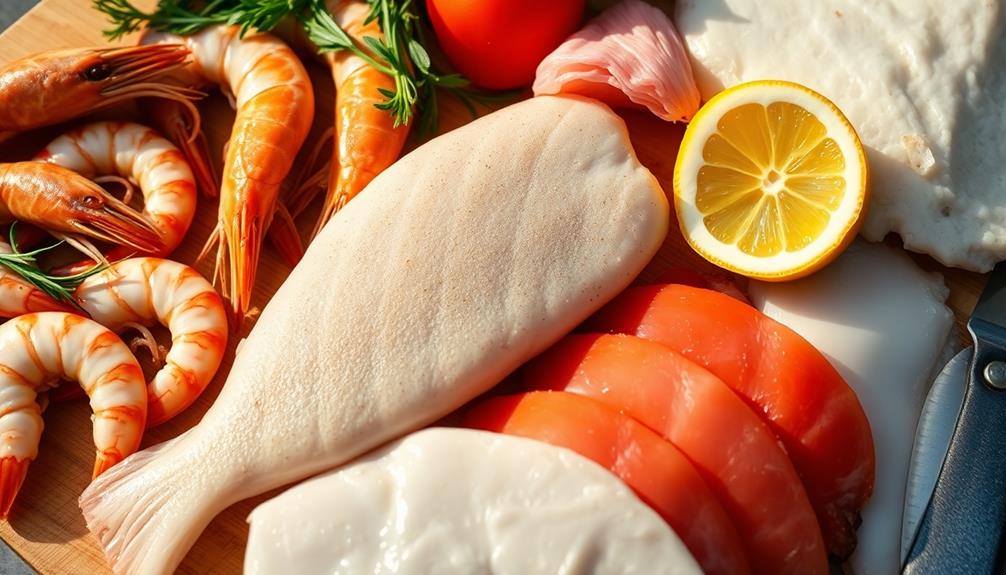
To begin, gather the seafood ingredients for your bouillabaisse. You'll need a variety of fresh fish and shellfish – perhaps some firm white fish like halibut or cod, as well as shrimp, clams, and mussels.
Carefully inspect each piece, removing any sand or debris. Slice the fish into bite-sized chunks, leaving the shrimp and shellfish whole. Arrange the prepared seafood on a platter, ready to add to the stew later.
Next, you'll want to make a quick fish stock to enhance the flavors. In a large pot, combine water, lemon peel, parsley stems, and any fish trimmings or bones you have on hand.
Bring to a boil, then reduce heat and let simmer for 30 minutes. Strain the stock through a fine-mesh sieve, discarding the solids.
This fragrant liquid will serve as the base for your bouillabaisse. With your seafood prepped and the stock ready, you're well on your way to creating an authentic Provençal masterpiece.
Step 2. Prepare the Aromatics
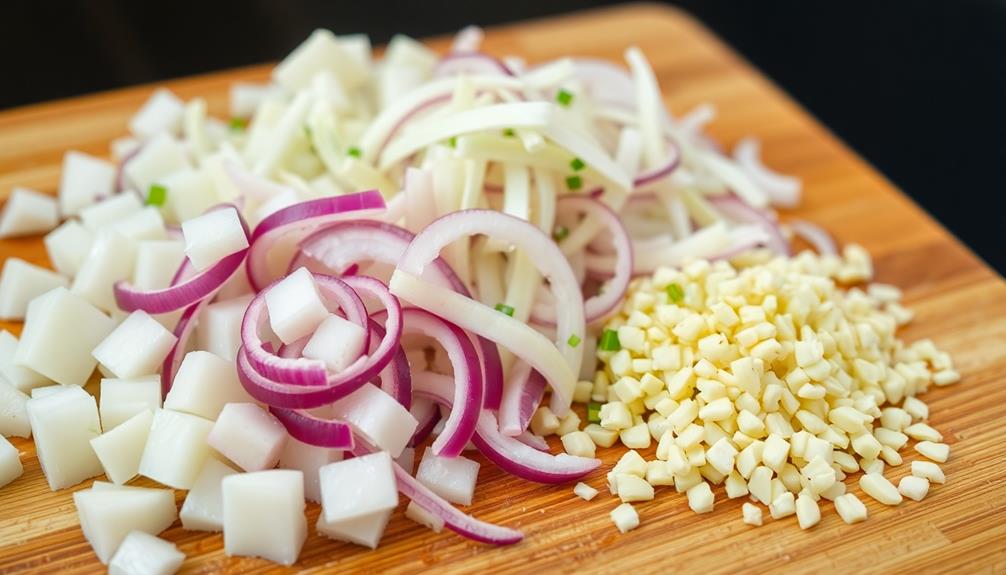
With the seafood and stock ready, start preparing the aromatic ingredients that will form the flavor foundation of your bouillabaisse.
First, finely chop the onion, garlic, and fennel. The onion's sweetness and the garlic's pungency will blend perfectly with the licorice-like fennel.
Next, slice the leeks, making sure to rinse away any dirt between the layers. The leeks will add a subtle, earthy flavor.
Lastly, zest the orange, capturing the bright, citrusy notes that will brighten the stew.
Gather all these chopped and sliced aromatics near your stovetop, as you'll be adding them in quick succession once the cooking begins.
The aromas wafting through your kitchen as you prepare these ingredients will have your mouth watering in anticipation.
With the aromatics ready, you're one step closer to creating an authentic Provençal bouillabaisse.
Step 3. Prepare the Broth Base
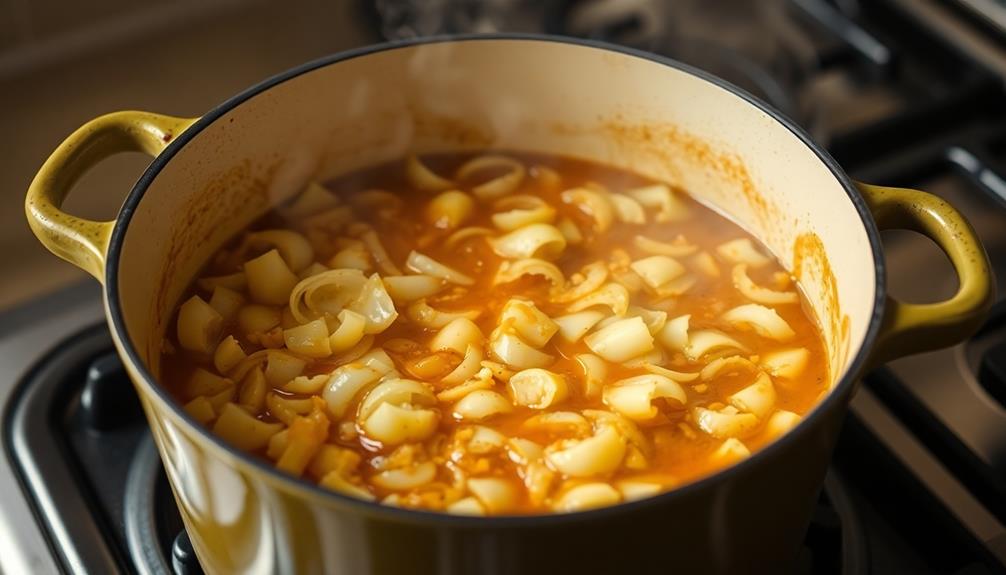
Begin by heating a large, heavy-bottomed pot or Dutch oven over medium heat.
Once it's hot, add a splash of olive oil and the reserved aromatics from the previous step – the onion, garlic, fennel, and any herbs or spices you'd like to include.
Sauté the aromatics for 5-7 minutes, stirring occasionally, until they're softened and fragrant.
Next, pour in the fish stock or broth.
If you're using canned or boxed stock, add a bit of water to thin it out.
Bring the broth to a gentle simmer, then add a pinch of saffron threads, if using.
Saffron lends a lovely golden hue and subtle flavor to the broth.
Let the broth simmer for 10-15 minutes, allowing the flavors to meld.
Taste and adjust the seasoning as needed, adding a sprinkle of salt and pepper.
Step 4. Add the Seafood
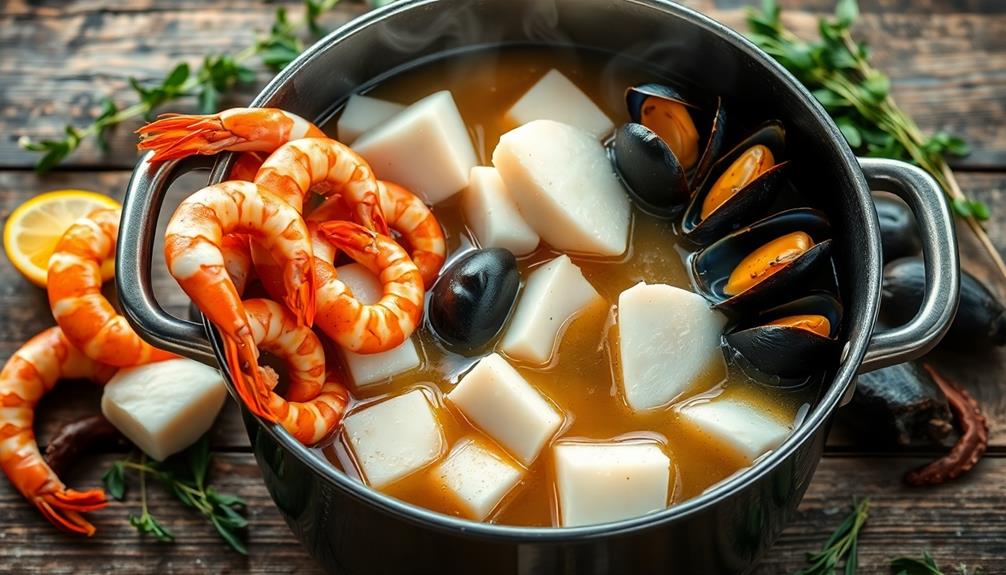
Once the broth has simmered, it's time to add the seafood. This is where the magic really starts to happen!
First, you'll want to prepare your seafood. Gather an assortment of fresh fish fillets, like cod, halibut, or snapper. You'll also need some shrimp, mussels, and clams.
Gently add the seafood to the simmering broth, being careful not to overcrowd the pot. The fish fillets should be cut into bite-sized pieces so they cook evenly. The shrimp, mussels, and clams can be left whole.
Let the seafood poach in the flavorful broth for about 5-7 minutes, until it's cooked through and the mussels and clams have opened up. This is the moment you've been waiting for – the aromas wafting from the pot are simply divine!
Now, you can ladle the bouillabaisse into bowls, making sure to include a variety of seafood in each serving. Get ready for an incredible flavor explosion in your mouth!
Step 5. Serve With Crusty Bread
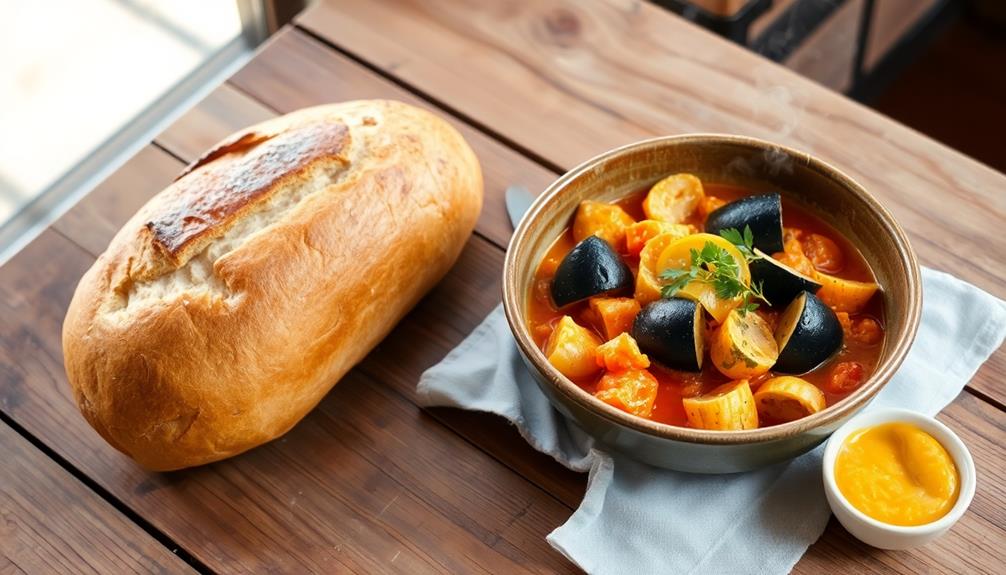
Serve bouillabaisse with a crusty, freshly baked baguette or country-style bread. This simple addition transforms the dish into a complete meal. Tear off a piece of the warm, crunchy bread and use it to soak up the flavorful broth. The bread's texture provides a delightful contrast to the tender seafood. It's the perfect accompaniment, allowing you to enjoy every drop of the stew.
Don't be afraid to get your hands dirty! Dip the bread directly into the bowl, sopping up the aromatic broth. The bread's nooks and crannies will capture every last bit of the soup's complex flavors. This interactive experience is part of the joy of eating bouillabaisse. It's a tactile, sensory delight that brings the dish to life.
Savor each bite, savoring the interplay of flavors and textures. The crusty bread and rich, fragrant stew create a harmonious balance that will leave you thoroughly satisfied.
Enjoy this classic Provençal pairing to the fullest.
Final Thoughts
Ultimately, bouillabaisse is a beloved Provençal dish that has stood the test of time. This iconic seafood stew is a true celebration of the region's rich maritime heritage.
The combination of fresh, locally-sourced fish and shellfish, simmered in a flavorful broth infused with aromatic herbs and spices, creates a harmonious and satisfying culinary experience.
As you savor each spoonful, you'll be transported to the sun-drenched coastal villages of Provence, where generations of fishermen have passed down this treasured recipe.
The depth of flavor and the vibrant colors of the dish make it a true feast for the senses. Whether you're enjoying it with friends and family or savoring it on your own, bouillabaisse is a meal that invites you to slow down, relax, and truly appreciate the simple pleasures of life.
Frequently Asked Questions
What Type of Fish Is Traditionally Used in Bouillabaisse?
The traditional fish used in bouillabaisse are a variety of Mediterranean seafood, often including rockfish, sea bass, monkfish, and mullet. These local, fresh catches are what give the iconic French stew its signature flavors.
Can Bouillabaisse Be Made With Canned Fish?
Can bouillabaisse be made with canned fish? Sure, you can use canned fish, but it won't have the same fresh, robust flavor as the traditional seafood mix. Canned fish may work in a pinch, but it's not the authentic way to make bouillabaisse.
How Long Does Bouillabaisse Need to Simmer?
How long should you simmer your bouillabaisse? Most recipes recommend simmering for 30-45 minutes, allowing the flavors to meld and the seafood to cook through. Don't let it go too long, or the fish might become tough.
Can Bouillabaisse Be Frozen for Later Use?
Can bouillabaisse be frozen for later use? Absolutely! You can freeze bouillabaisse for up to 3 months. Just be sure to let it cool completely before portioning and freezing it in airtight containers.
What Bread Is Typically Served With Bouillabaisse?
The bread typically served with bouillabaisse is crusty, grilled bread. You'll often find slices of toasted or grilled baguette served alongside this hearty seafood stew to soak up the flavorful broth.

